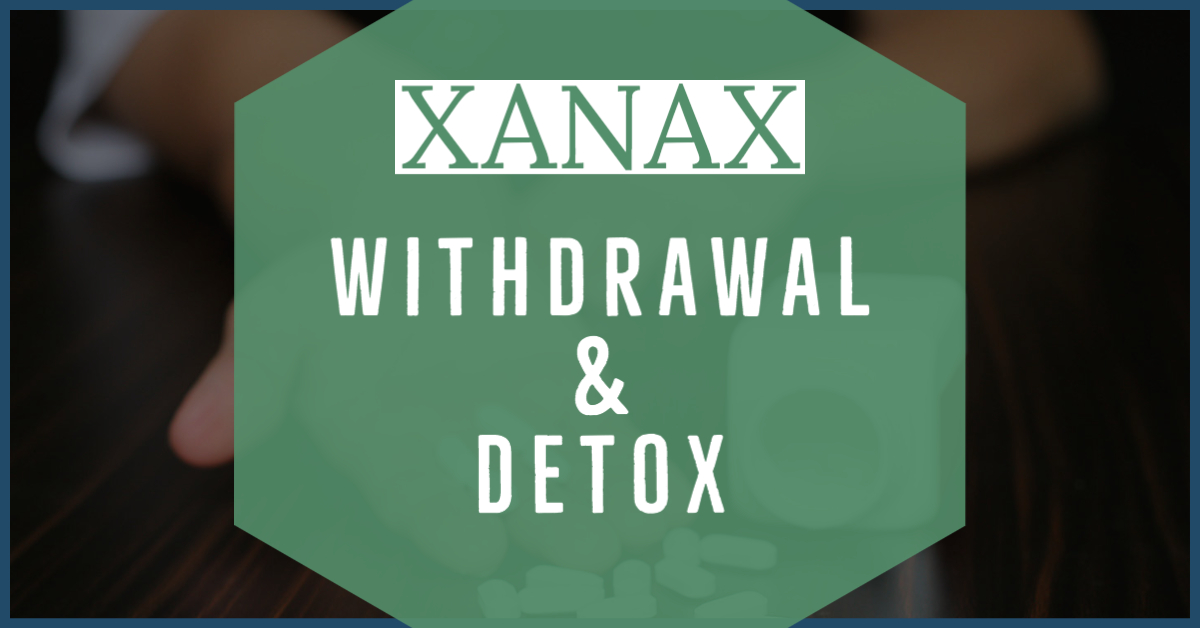Xanax is typically prescribed to treat anxiety and PTSD disorders. Alprazolam (Xanax) belongs to a class of medications called Benzodiazepines. This class of drugs act on the brain and central nervous system to help the user feel more relaxed. Xanax works by increasing the effects of a brain chemical called gamma-aminobutyric acid (GABA), which promotes calmness and produces a relaxed feeling. The drug decreases the level of excitement in the brain to treat anxiety and panic disorders. If you are struggling with Xanax addiction, contact our Xanax rehab program.
Common Adverse Effects of Xanax Include:
- Aggression
- Irritability
- Irrational Behavior
- Dizziness
- Nausea
- Drowsiness
- Change in sex drive
- Constipation
If you are experiencing these symptoms for a prolonged period of time, talk to your doctor.
Xanax Addiction

This medication does work for many people, however, there are some who may develop an addiction to the drug. The potential for xanax abuse is very high and developing a dependence towards the drug is even higher.
“Despite being the most prescribed psychiatric drug in the United States, Xanax is frequently abused due to its short-acting, intense effects”
Signs You May Be Dependent on Xanax
If you find yourself not being able to go a day without taking the drug, you may have developed a dependence towards Xanax. This physical and psychological dependence can start to become overwhelming; leading to addiction.
Addiction is the next stage in dependence where you start to take more than your normal dosage to feel desired effects or intentionally taking more to feel intoxicated.
Signs You or A Loved-One May Need Help
Xanax should solve more problems than it causes. Xanax abuse is often clearer from an outside perspective. Family and friends will often see changes in behavior. Common personality traits are aggression and irritability. They will often be defensive and seem almost drunk. This type of behavior is due to abuse.
To learn more about the effects of Xanax abuse and what to look for click here.
If you or someone you know has been abusing xanax, it might be time to seek help. The medication should be used to treat disorders. When used to cope or feel specific desired effects of intoxication, this can lead to a psychological and physical addiction.
Much like alcohol, a person will need to take more and more to feel these effects. Overtime, due to tolerance, the body starts to enter into withdrawals as it now needs the drug to feel normal. These withdrawals will only occur when the drug is abused: overdoing a prescription or using illicitly.
Xanax Withdrawals

Xanax withdrawals can be fatal. Once an individual has developed a physical dependence towards Alprazolam (or any other Benzodiazepine) they will experience withdrawals. The intensity of the withdrawal will depend on length of use, amount used, mental illness, and family history. Not detoxing properly from xanax could be potentially fatal. Always consult a specialist before quitting cold-turkey.f
Early Withdrawals
Because Xanax is a short-acting benzodiazepine, withdrawals can appear as soon as 6 hours after taking the drug. Within those early hours, a person can experience panic, insomnia, and anxiety, which are known as “rebound symptoms.
Acute Withdrawals
Acute withdrawal from Xanax happens within the very first few days after ending use and can last anywhere from two weeks to a couple of months. This phase in the withdrawal may be very unpleasant and is generally when relapse takes place if an individual is not withdrawing in the care of specialists. That is because the symptoms that establish throughout this time can be debilitating and last for long periods of time. While every recuperating Xanax user is different, some of the most typical signs experienced across the board throughout acute withdrawal consist of the following:
- Nausea
- Diarrhea
- Problems concentrating
- Clouded thinking
- Vomiting
- Muscle spasms
- Muscle tension
- Cravings
- Mood swings
- Hallucinations
- Blurred vision
- Memory impairment
- Twitching
During acute withdrawal, suicidal thoughts/behaviors and seizures can take place, both of which are incredibly harmful and can be lethal. Being in the care of professionals can help reduce the intensity of all of these symptoms, but be life-saving for those who experience seizures and self-destructive tendencies, as both medical and psychiatric care can be offered.
Protracted Withdrawals
While the majority of people recuperating from Xanax dependency will go through both early withdrawal and acute withdrawal, just about 10% of those withdrawing from this benzodiazepine will experience protracted withdrawal. This phase of withdrawal can last months to years after an individual stops abusing Xanax and can consist of signs such as:
- Anxiety
- Muscle twitches
- Mood swings
- Tingling in the arms and legs
- Cognitive deficits
- Insomnia
Because Xanax has actually impacted the method in which the brain and other systems in the body are able to operate, these signs generally last for such a long duration of time. These results do not disappear when use ends, as Xanax dependency can leave long-term, irreversible damage. Usually, these symptoms persist due to the damage brought on by extreme Xanax abuse, which include:
- Long-term retention of Xanax in the body’s tissues
- Alterations in immune system
- Changes in the GABA receptors in the brain
- Physical structural changes in the brain
- Changes in chemicals in the brain, such as serotonin, noradrenaline, norepinephrine, and dopamine
- Tissue damage in the brain
Protracted withdrawal, while it can cover years, might be made easier to handle with the aid of pharmaceutical interventions and therapeutic care.
Xanax Withdrawal at a Treatment Center – Why Is It Important?

Substance use disorders, like Xanax addiction, are best treated in a professional setting where there are mental health and medical specialists who help in safe and effective healing. This is because, most importantly else, ending Xanax abuse cold turkey can be deadly. Unexpected cessation of this drug can trigger seizures and self-destructive behaviors, both of which can cause death. Guaranteeing that signs are effectively managed and dealt with is vital during withdrawal, which is why starting the procedure of detox in a treatment center is critical.
Beyond having extreme signs kept track of and dealt with, going through Xanax withdrawal at a treatment center is very important for the following reasons:
- Preventing relapse – Relapsing during Xanax withdrawal is really typical, as the symptoms that develop can become too tough to deal with. When in a treatment center, nevertheless, relapsing isn’t possible like it would be if an individual were withdrawing at home since Xanax and other substances are not able to be obtained.
- Minimizing Symptoms – Xanax withdrawal triggers several symptoms that are not life-threatening but are disturbing and sometimes even incapacitating. Symptoms such as headaches, muscle aches, queasiness, and vomiting can be lessened with over-the-counter and prescription medications. Decreasing the intensity of symptoms can produce a much easier, shorter period of withdrawal.
- Using continuity of care – When a person is detoxing, the very best thing they can do for themselves is to continue with restorative treatment once they have actually detoxed completely. Currently being in a detox center enables a simple shift into that type of care, as the majority of detox centers use treatment programs or have connections to other centers who do.
Am I Addicted to Xanax?
It is not always very easy to see if your habits surrounding your Xanax use define addiction, especially due to the fact that making use of Xanax in people of all ages and races is extremely typical. It is so typical, in fact, that using it has been glamorized in movies, tv, music and social media. Nevertheless, using Xanax in any other way aside from what is suggested by your own personal physician can be an indication of a much larger problem.
You will experience numerous symptoms of that dependency if you are addicted to Xanax. These consist of, however, are not restricted to, the following:
- Continuing to abuse Xanax when not wanting to
- Abusing Xanax in hazardous situations
- Needing more Xanax in order to attain preferred effects
- Experiencing withdrawal symptoms when unable to utilize as much as regular or when not using at all
- Socially isolating from friends, family, and loved ones
- Having a hard time at work, house, and/or at school
- Abusing Xanax for longer time periods than originally prepared
- Continuing to abuse Xanax even though your abuse has actually caused major repercussions
- Investing a significant amount of time attempting to utilize and get Xanax
- Cravings for Xanax
- Having encounters with the law
Financial problems due to investing extreme quantities of money to support your Xanax abuse
When the abuse of a drug such as this begins getting to the point where an addiction is forming, it can be really challenging to hide from others. Therefore, you may be experiencing an addiction to Xanax if you have a number of individuals confronting you about your use.







